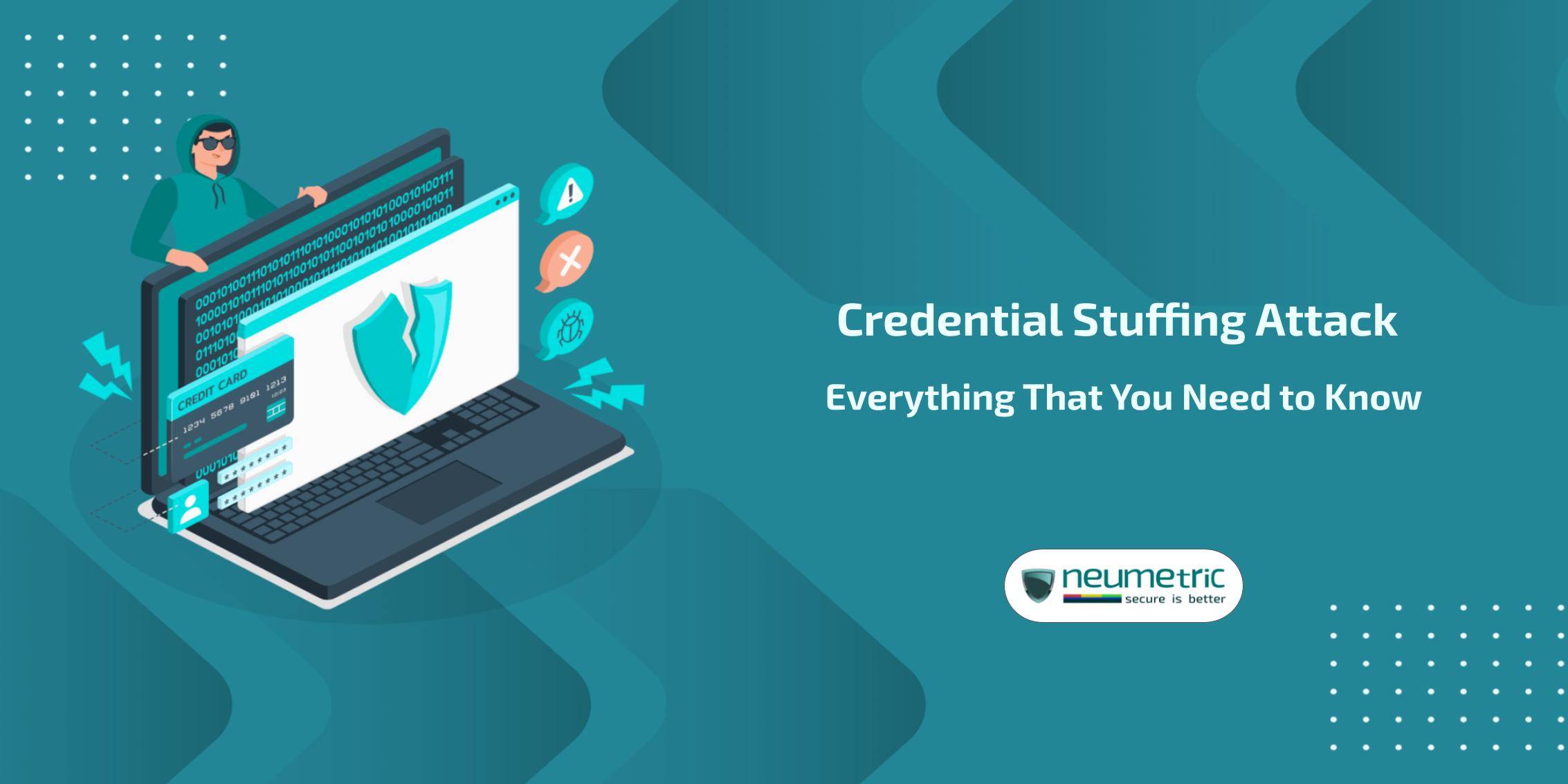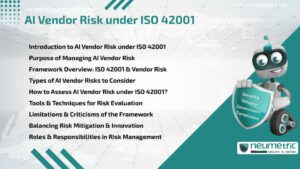Table of Contents
ToggleUnderstanding Credential Stuffing Attacks: A Comprehensive Guide
Introduction
In today’s interconnected digital world, cybersecurity threats loom large, with hackers constantly devising new methods to compromise sensitive information. One such method that has gained prominence in recent years is the credential stuffing attack. This comprehensive journal aims to delve deep into the world of credential stuffing attacks, shedding light on its intricacies, impacts, prevention strategies & future trends.
What is a Credential Stuffing Attack?
A credential stuffing attack is a sophisticated form of cyber assault orchestrated by hackers to exploit the widespread phenomenon of password reuse among individuals. Unlike traditional brute-force attacks, where hackers attempt to guess passwords through random iterations, credential stuffing involves the automated bombardment of websites & applications with large volumes of stolen username-password pairs. This method relies on the assumption that many users reuse the same login credentials across multiple online accounts, thereby creating a vulnerability ripe for exploitation.
How Credential Stuffing Works
At the heart of these attacks lies the exploitation of password reuse habits prevalent among users. It’s a common practice for individuals to utilize the same username & password combination across various online platforms for convenience. However, this convenience comes at a steep security cost. Hackers seize upon this vulnerability by procuring login credentials obtained from breaches of one website & then employing these stolen credentials to gain unauthorized access to other platforms.
To execute these attacks with efficiency & scale, attackers leverage sophisticated tools & techniques. These tools are specifically designed to automate the process of testing stolen credentials across numerous websites & applications. Through rapid cycling of vast lists of compromised credentials, attackers systematically attempt to log in to targeted platforms. Additionally, attackers employ advanced techniques such as IP rotation & CAPTCHA bypass to evade detection mechanisms implemented by targeted websites, prolonging their assault & maximizing their chances of success.
Real-World Examples of Credential Stuffing Attacks
The prevalence & impact of credential stuffing attacks are underscored by numerous high-profile incidents affecting companies & organizations across various sectors. For instance, in 2019, streaming giant Netflix reported a surge in unauthorized login attempts attributed to credential stuffing attacks. This prompted the company to urge users to reset their passwords as a precautionary measure. Similarly, financial institutions, e-commerce platforms & social media networks have also fallen victim to credential stuffing attacks, resulting in significant financial losses & reputational damage.
The repercussions of credential stuffing attacks extend beyond the affected organizations, profoundly impacting individuals whose credentials are compromised. Users may suffer financial losses, identity theft & privacy breaches as a consequence of unauthorized access to their accounts. Moreover, businesses face the daunting task of restoring customer trust & implementing robust security measures to thwart future attacks, underscoring the pervasive & enduring consequences of credential stuffing assaults.
Factors Contributing to Credential Stuffing
One of the primary sources of credentials used in credential stuffing attacks is data breaches & leakages. When hackers successfully breach a database containing user credentials, they can then use automated tools to test these credentials across various online services. The increasing frequency & scale of data breaches have fueled the proliferation of credential stuffing attacks, highlighting the importance of secure data storage & encryption practices.
Inadequate password management practices also contribute to the success of credential stuffing attacks. Many users still rely on weak passwords or reuse the same passwords across multiple accounts, making them easy targets for attackers. Educating users about the importance of creating strong, unique passwords & implementing multi-factor authentication can help mitigate the risk of credential stuffing.
The automation capabilities of modern cyberattack tools, coupled with the use of botnets, play a crucial role in the scalability & effectiveness of credential stuffing attacks. Botnets, composed of compromised computers & devices controlled by hackers, can execute login attempts at a rapid pace, overwhelming targeted websites’ defenses. As such, combating credential stuffing requires not only technological solutions but also measures to disrupt & dismantle botnet infrastructure.
Detection & Prevention Techniques
Implementing Multi-Factor Authentication [MFA]
Multi-Factor Authentication [MFA] stands as one of the most effective countermeasures against credential stuffing attacks. This approach enhances security by requiring users to provide additional verification factors beyond just a username & password. By incorporating multiple layers of authentication, MFA makes it significantly more challenging for attackers to compromise accounts, even if they possess valid credentials obtained through data breaches.
One common form of MFA involves sending one-time codes to users’ mobile devices or email addresses during the login process. These codes serve as temporary authentication tokens that must be entered alongside the user’s regular credentials. Since these codes are generated dynamically & are only valid for a short period, they add an extra layer of security that mitigates the risk posed by stolen passwords.
Another increasingly popular form of MFA is biometric authentication, which relies on unique physical characteristics such as fingerprints, facial recognition or iris scans to verify users’ identities. Biometric authentication offers a high level of security since these characteristics are difficult to replicate or forge. By requiring users to provide biometric data in addition to their regular credentials, organizations can significantly reduce the likelihood of unauthorized access through credential stuffing attacks.
Monitoring for Anomalous Activities
Early detection is critical in mitigating the impact of credential stuffing attacks. By implementing robust monitoring systems capable of detecting unusual login patterns & anomalous activities, organizations can swiftly identify & respond to unauthorized access attempts. Suspicious activities such as multiple failed login attempts from different geographic locations or devices should trigger alerts for further investigation.
Advanced anomaly detection algorithms can analyze login patterns & user behavior to identify deviations from normal activity. For example, if a user suddenly attempts to log in from a country or device that they have never used before, it could be a red flag indicating a potential credential stuffing attack. By continuously monitoring for such anomalies, organizations can proactively identify & thwart attacks before they escalate.
Utilizing Web Application Firewalls [WAFs]
Web Application Firewalls [WAFs] play a crucial role in protecting against various types of cyber threats, including credential stuffing attacks. WAFs sit between users & web applications, analyzing incoming traffic to detect & block malicious requests in real-time. By filtering out malicious traffic & blocking suspicious activities, WAFs help mitigate the risk posed by credential stuffing attacks.
To effectively defend against credential stuffing attacks, organizations should deploy WAFs with tailored rule sets designed to detect & block suspicious login attempts. These rules can include criteria such as the frequency of login attempts, the presence of unusual user agents or IP addresses & patterns indicative of automated bot activity. Regularly updating WAF rule sets to address emerging threats & evolving attack techniques is essential to maintaining effective protection against credential stuffing.
Educating Users About Password Hygiene
User education plays a crucial role in preventing credential stuffing attacks. By raising awareness about the risks of password reuse, the importance of creating strong passwords & the benefits of enabling additional security measures such as MFA, organizations can empower users to take proactive steps to protect their accounts.
Training programs, security awareness campaigns & interactive tutorials can help reinforce good password hygiene practices among users. These initiatives should emphasize the importance of using unique passwords for each online account, avoiding easily guessable passwords & regularly updating passwords to reduce the risk of compromise. Additionally, educating users about the benefits of enabling MFA & providing clear instructions on how to set it up can further enhance account security & resilience against credential stuffing attacks.
Legal & Ethical Implications
In the wake of increasing cybersecurity threats, governments around the world have enacted regulations & laws aimed at safeguarding sensitive data & holding organizations accountable for data breaches. Compliance with regulations such as the General Data Protection Regulation [GDPR] & the California Consumer Privacy Act [CCPA] is essential for organizations to avoid hefty fines & legal repercussions resulting from data breaches caused by credential stuffing attacks.
Conclusion
Credential stuffing attacks pose a significant threat to organizations & individuals alike, leveraging stolen credentials to gain unauthorized access to online accounts. By understanding the underlying mechanisms of these attacks, implementing robust security measures & fostering a culture of cybersecurity awareness, organizations can mitigate the risk of credential stuffing & safeguard their digital assets against malicious actors. As technology continues to evolve, staying vigilant & proactive in the fight against credential stuffing remains paramount to maintaining a secure online environment for all stakeholders.
FAQ
Why is Multi-Factor Authentication [MFA] essential in protecting against credential stuffing attacks?
Multi-Factor Authentication [MFA] is crucial in defending against credential stuffing attacks because it adds an extra layer of security beyond just usernames & passwords. With the prevalence of data breaches & password reuse habits among users, stolen credentials are often readily available to attackers. MFA requires users to provide additional verification factors such as one-time codes sent to their mobile devices or biometric data, making it significantly more difficult for attackers to compromise accounts. By incorporating multiple layers of authentication, MFA reduces the risk posed by credential stuffing attacks & enhances overall account security.
How can businesses achieve continuous improvement in cybersecurity?
Organizations can detect & respond to credential stuffing attacks in real-time by implementing robust monitoring systems capable of detecting unusual login patterns & anomalous activities. Suspicious activities such as multiple failed login attempts from different geographic locations or devices should trigger alerts for further investigation. Advanced anomaly detection algorithms can analyze login patterns & user behavior to identify deviations from normal activity. By continuously monitoring for such anomalies, organizations can proactively identify & thwart credential stuffing attacks before they escalate, minimizing their impact & mitigating potential damage.
Why is urgency emphasized for businesses to invest in cybersecurity resilience?
In the event of a credential stuffing attack, organizations face significant legal & ethical implications, particularly concerning data protection & privacy. Governments worldwide have enacted regulations & laws such as the General Data Protection Regulation [GDPR] & the California Consumer Privacy Act [CCPA] to safeguard sensitive data & hold organizations accountable for data breaches. Compliance with these regulations is essential for organizations to avoid hefty fines & legal repercussions resulting from data breaches caused by credential stuffing attacks.
Moreover, organizations have an ethical responsibility to safeguard the personal information entrusted to them by users & customers. Data breaches resulting from credential stuffing attacks can have far-reaching consequences, including financial losses, identity theft & privacy breaches. By prioritizing cybersecurity & implementing robust security measures, organizations can fulfill their ethical obligations to protect individuals’ privacy & security in an increasingly digital world.





